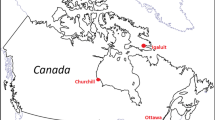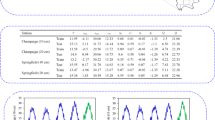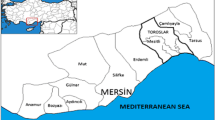Abstract
Since soil temperature (ST) is one of the most critical determinants affecting the soil’s physical and chemical properties, the studies on soil temperature estimation increase with the widespread use of deep learning and machine learning algorithms. This study estimates soil temperature at four depths for Giresun and Bayburt stations in Turkey employing the Bayesian Tuned Gaussian Process Regression (BT-GPR), Bayesian Tuned Support Vector Regression (BT-SVR), and Long Short Term Memory (LSTM) models. The stations were selected from semiarid (Bayburt station) and very humid (Giresun station) climates to compare the models’ performance and measure their applicability in different climate classes. Common meteorological indicators were determined as input parameters in the developed models, and a five-and-a-half-year daily dataset was used for all models. This paper represents a novel scheme to optimize the hyperparameters of kernel functions for GPR and SVR models using the Bayesian optimization method to expand predictive efficiency. The developed GPR and SVR models’ outputs are compared with LSTM via three statistical metrics comprising the root mean square error (RMSE), mean absolute error (MAE), and the coefficient of determination (R2). The results show that the BT-GPR model has a superior estimation ability than other developed models for the two stations. The daily ST estimation with the highest accuracy was obtained at a 5-cm depth using BT-GPR at Giresun station (RMSE = 0.0439, R2 = 0.9535, MAE = 0.0344 in the testing phase) and Bayburt station (RMSE = 0.0525, R2 = 0.9438, MAE = 0.0412 in the testing phase). These outcomes provide helpful benchmarking guidance for future soil temperature investigation at various depths across the selected regions.







Similar content being viewed by others
Data availability
Applicable on request.
Code availability
Applicable on request.
References
Aalto J, le Roux PC, Luoto M (2013) Vegetation mediates soil temperature and moisture in Arctic-Alpine environments. Arct Antarct Alp Res 45(4):429–439
Abbasimehr H, Shabani M, Yousefi M (2020) An optimized model using LSTM network for demand forecasting. Comput Ind Eng 143:106435. https://doi.org/10.1016/j.cie.2020.106435
Abbes AB, Magagi R, Goita K (2019) Soil moisture estimation from SMAP observations using long short- term memory (LSTM). In: IGARSS 2019 - 2019 IEEE International Geoscience and Remote Sensing Symposium. pp 1590–1593
Alizamir M, Kim S, Zounemat-Kermani M, Heddam S, Shahrabadi AH, Gharabaghi B (2020) Modelling daily soil temperature by hydro-meteorological data at different depths using a novel data-intelligence model: deep echo state network model. Artif Intell Rev. https://doi.org/10.1007/s10462-020-09915-5
Araghi A, Mousavi-Baygi M, Adamowski J et al (2017) Forecasting soil temperature based on surface air temperature using a wavelet artificial neural network. Meteorol Appl 24:603–611. https://doi.org/10.1002/met.1661
Banerjee A (2019) Intuitive hyperparameter optimization : grid search, random search and Bayesian search. https://towardsdatascience.com/intuitive-hyperparameter-optimization-grid-search-random-search-and-bayesian-search-2102dbfaf5b. Accessed 1 Oct 2020
Behmanesh J, Mehdizadeh S (2017) Estimation of soil temperature using gene expression programming and artificial neural networks in a semiarid region. Environ Earth Sci 76. https://doi.org/10.1007/s12665-017-6395-1
Bergstra J, Bengio Y (2012) Random search for hyper-parameter optimization. J Mach Learn Res 13:281–305
Bilgili M, Şimşek E, Şahin B (2010) Determination of the soil temperatures in Aegean Region by artificial neural network method. Isi Bilim Ve Tek Dergisi/ J Therm Sci Technol 30:121–132
Cortes C, Vapnik V (1995) Support-Vector Networks. Mach Learn 20:273–297. https://doi.org/10.1023/A:1022627411411
Delbari M, Sharifazari S, Mohammadi E (2019) Modeling daily soil temperature over diverse climate conditions in Iran—a comparison of multiple linear regression and support vector regression techniques. Theor Appl Climatol 135:991–1001. https://doi.org/10.1007/s00704-018-2370-3
FAO (2019) FAOSTAT. http://www.fao.org/faostat/en/#home. Accessed 5 Oct 2020
Fern RR, Morrison ML, Grant WE et al (2020) Modeling the influence of livestock grazing pressure on grassland bird distributions
Guleryuz D (2021a) Determination of industrial energy demand in Turkey using MLR, ANFIS and PSO-ANFIS. 3:16–34. https://doi.org/10.33969/AIS.2021.31002
Guleryuz D (2021b) Forecasting Outbreak of COVID-19 in Turkey; Comparison of Box–Jenkins, Brown’s Exponential Smoothing and Long Short-Term Memory Models. Process Saf Environ Prot. https://doi.org/10.1016/j.psep.2021.03.032
Guleryuz D, Ozden E (2020) The prediction of Brent crude oil trend using LSTM and Facebook Prophet. Eur J Sci Technol 1–9. https://doi.org/10.31590/ejosat.759302
Hao H, Yu F, Li Q (2020) Soil temperature prediction using convolutional neural network based on ensemble empirical mode decomposition. IEEE Access 9:1–1. https://doi.org/10.1109/access.2020.3048028
Hu G, Zhao L, Li R et al (2020) Estimation of ground temperatures in permafrost regions of the Qinghai-Tibetan Plateau from climatic variables. Theor Appl Climatol 140:1081–1091. https://doi.org/10.1007/s00704-020-03135-1
Kisi O, Sanikhani H, Cobaner M (2017) Soil temperature modeling at different depths using neuro-fuzzy, neural network, and genetic programming techniques. Theor Appl Climatol 129:833–848. https://doi.org/10.1007/s00704-016-1810-1
Li Q, Hao H, Zhao Y et al (2020) GANs-LSTM model for soil temperature estimation from meteorological: a new approach. IEEE Access 8:59427–59443. https://doi.org/10.1109/ACCESS.2020.2982996
Likas A, Vlassis N, Verbeek JJ (2003) The global k-means clustering algorithm. Pattern Recognit 36:451–461. https://doi.org/10.1016/S0031-3203(02)00060-2
MathWorks (2020) MathWorks. https://www.mathworks.com/help/stats/fitrgp.html. Accessed 3 Sep 2020
Mehdizadeh S, Fathian F, Safari MJS, Khosravi A (2020a) Developing novel hybrid models for estimation of daily soil temperature at various depths. Soil Tillage Res 197:104513. https://doi.org/10.1016/j.still.2019.104513
Mehdizadeh S, Mohammadi B, Bao Pham Q et al (2020b) Implementing novel hybrid models to improve indirect measurement of the daily soil temperature: Elman neural network coupled with gravitational search algorithm and ant colony optimization. Meas J Int Meas Confed 165:108127. https://doi.org/10.1016/j.measurement.2020.108127
MeteoService (2021) Turkish State Meteorological Service. Accessed 1 Oct 2020 https://www.mgm.gov.tr/
Mihoub R, Chabour N, Guermoui M (2016) Modeling soil temperature based on Gaussian process regression in a semi-arid-climate, case study Ghardaia, Algeria. Geomech Geophys Geo-Energy Geo-Resour 2:397–403. https://doi.org/10.1007/s40948-016-0033-3
Moazenzadeh R, Mohammadi B (2019) Assessment of bio-inspired metaheuristic optimisation algorithms for estimating soil temperature. Geoderma 353:152–171. https://doi.org/10.1016/j.geoderma.2019.06.028
Nwankwo C, Ogagarue D (2012) An investigation of temperature variation at soil depths in parts of Southern Nigeria. Am J Environ Eng 2:142–147. https://doi.org/10.5923/j.ajee.20120205.05
Quan Q, Hao Z, Xifeng H, Jingchun L (2020) Research on water temperature prediction based on improved support vector regression. Neural Comput Appl 4. https://doi.org/10.1007/s00521-020-04836-4
Richardson RR, Osborne MA, Howey DA (2017) Gaussian process regression for forecasting battery state of health. J Power Sources 357:209–219. https://doi.org/10.1016/j.jpowsour.2017.05.004
Roman I, Santana R, Mendiburu A, Lozano JA (2019) An experimental study in adaptive kernel selection for Bayesian optimization. IEEE Access 7:184294–184302. https://doi.org/10.1109/ACCESS.2019.2960498
Samadianfard S, Ghorbani MA, Mohammadi B (2018) Forecasting soil temperature at multiple-depth with a hybrid artificial neural network model coupled-hybrid firefly optimizer algorithm. Inf Process Agric 5:465–476. https://doi.org/10.1016/j.inpa.2018.06.005
Sanikhani H, Deo RC, Yaseen ZM et al (2018) Non-tuned data intelligent model for soil temperature estimation: a new approach. Geoderma 330:52–64. https://doi.org/10.1016/j.geoderma.2018.05.030
Sattari MT, Apaydin H, Shamshirband S (2020a) Performance evaluation of deep learning-based gated recurrent units (GRUs) and tree-based models for estimating ETo by using limited meteorological variables. Mathematics 8:1–18. https://doi.org/10.3390/MATH8060972
Sattari MT, Avram A, Apaydin H, Matei O (2020b) Soil temperature estimation with meteorological parameters by using tree-based hybrid data mining models. Mathematics 8. https://doi.org/10.3390/MATH8091407
Sensoy S, Demircan M (2010) Climatological applications in Turkey (Issue May). Accessed 2 Sep 2020 https://www.mgm.gov.tr/FILES/iklim/yayinlar/Climatological-Applications-Before2013.pdf
Shamshirband S, Esmaeilbeiki F, Zarehaghi D et al (2020) Comparative analysis of hybrid models of firefly optimization algorithm with support vector machines and multilayer perceptron for predicting soil temperature at different depths. Eng Appl Comput Fluid Mech 14:939–953. https://doi.org/10.1080/19942060.2020.1788644
Sihag P, Esmaeilbeiki F, Singh B, Pandhiani SM (2020) Model-based soil temperature estimation using climatic parameters: the case of Azerbaijan Province. Iran Geol Ecol Landscapes 4:203–215. https://doi.org/10.1080/24749508.2019.1610841
Tabari H, Hosseinzadeh Talaee P, Willems P (2015) Short-term forecasting of soil temperature using artificial neural network. Meteorol Appl 22:576–585. https://doi.org/10.1002/met.1489
Tanaka K, Hashimoto S (2006) Plant canopy effects on soil thermal and hydrological properties and soil respiration. Ecol Modell 196:32–44. https://doi.org/10.1016/j.ecolmodel.2006.01.004
Wang Y, Li J, Gu J et al (2015) Artificial neural networks for infectious diarrhea prediction using meteorological factors in Shanghai (China). Appl Soft Comput J 35:280–290. https://doi.org/10.1016/j.asoc.2015.05.047
Zendehboudi A, Abdul Baseer M, Saidur R (2018) Application of support vector machine models for forecasting solar and wind energy resources: a review. J Clean Prod 199:272–285. https://doi.org/10.1016/j.jclepro.2018.07.164
Zhang C, Wei H, Zhao X et al (2016) A Gaussian process regression based hybrid approach for short-term wind speed prediction. Energy Convers Manag 126:1084–1092. https://doi.org/10.1016/j.enconman.2016.08.086
Zhao C, Chen H, Sun S (2018) Evaluating the Capabilities of Soil Enthalpy, Soil Moisture and Soil Temperature in Predicting Seasonal Precipitation. Adv Atmos Sci 35:445–456. https://doi.org/10.1007/s00376-017-7006-5
Zheng D, Hunt ER, Running SW (1993) A daily soil temperature model based on air temperature and precipitation for continental applications. Clim Res 2:183–191. https://doi.org/10.3354/cr002183
Acknowledgements
I would like to thank Ömer Erdoğan, the meteorology director of Bayburt Province, who shared his knowledge on meteorological parameters.
Author information
Authors and Affiliations
Contributions
DG designed the study, analyzed the data, reviewed the literature, and wrote the manuscripts. The author read and approved the final manuscript.
Corresponding author
Ethics declarations
Ethics approval and consent to participate
Not applicable.
Consent for publication
Not applicable.
Competing interests
The author declares no competing interests.
Additional information
Publisher's note
Springer Nature remains neutral with regard to jurisdictional claims in published maps and institutional affiliations.
Rights and permissions
About this article
Cite this article
Guleryuz, D. Estimation of soil temperatures with machine learning algorithms—Giresun and Bayburt stations in Turkey. Theor Appl Climatol 147, 109–125 (2022). https://doi.org/10.1007/s00704-021-03819-2
Received:
Accepted:
Published:
Issue Date:
DOI: https://doi.org/10.1007/s00704-021-03819-2




